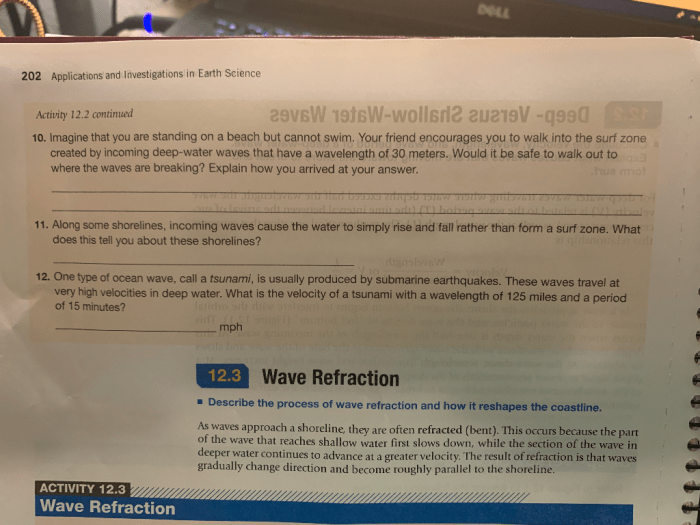Applications & investigations in earth science embark on an extraordinary journey into the depths of our planet, unraveling the mysteries that shape our world. From harnessing earth’s resources to mitigating environmental challenges, this captivating narrative unveils the profound impact of earth science on our daily lives.
Through meticulous investigations, earth scientists employ cutting-edge technologies to decipher the complexities of our planet. From geological expeditions to geophysical surveys, the pursuit of knowledge fuels our understanding of earth’s systems and processes.
Applications in Earth Science

Earth science plays a vital role in addressing environmental challenges. It provides a scientific basis for understanding the causes and consequences of environmental issues such as climate change, pollution, and resource depletion.
Earth science is also essential for resource exploration and management. By studying the distribution and characteristics of geological formations, earth scientists can identify and extract valuable resources such as oil, gas, minerals, and water.
Disaster Risk Reduction and Mitigation
- Earth science helps assess and mitigate risks associated with natural disasters such as earthquakes, landslides, and floods.
- By studying the geological processes that trigger these events, earth scientists can develop models to predict their occurrence and design mitigation strategies to reduce their impact.
Investigations in Earth Science

Geological investigations involve a range of methods and techniques to study the Earth’s structure, composition, and history.
Geological Investigations
- Fieldwork: Involves observing and collecting data in the field to study geological formations, fossils, and other features.
- Laboratory analysis: Rocks and minerals are analyzed in the laboratory to determine their composition, age, and other properties.
Geophysical Surveys
- Seismic surveys: Use sound waves to image the Earth’s subsurface, revealing structures and formations that cannot be observed directly.
- Gravity and magnetic surveys: Measure variations in gravity and magnetic fields to infer the distribution of mass and magnetic materials within the Earth.
Geochemical Analyses
- Isotopic analysis: Measures the ratios of different isotopes of elements to determine the age and origin of rocks and minerals.
- Chemical analysis: Determines the elemental composition of rocks and minerals to understand their formation and alteration processes.
Earth Science and Technology

Advancements in technology have greatly enhanced earth science research.
Remote Sensing and GIS
- Remote sensing: Uses satellites and other platforms to collect data about the Earth’s surface from a distance.
- Geographic Information Systems (GIS): Manage and analyze spatial data to create maps and models that visualize and interpret earth science data.
Modeling and Simulation
- Computer models: Simulate earth systems and processes to predict their behavior and interactions.
- Numerical modeling: Uses mathematical equations to represent and solve complex earth science problems.
Applications in Education and Outreach

Earth science education is crucial for environmental literacy and sustainability.
Earth Science Education, Applications & investigations in earth science
- K-12 curricula: Integrate earth science concepts and investigations into science education to foster understanding of the Earth and its processes.
- Higher education: Offer specialized earth science programs to train future scientists and professionals.
Outreach and Awareness
- Museums and science centers: Engage the public with interactive exhibits and educational programs that promote earth science awareness.
- Media and outreach initiatives: Communicate earth science research and its implications to the general public.
Questions Often Asked: Applications & Investigations In Earth Science
What is the role of earth science in addressing environmental challenges?
Earth science provides critical insights into the complex interactions between human activities and the natural environment. By studying earth systems, scientists can identify and develop strategies to mitigate climate change, reduce pollution, and conserve biodiversity.
How is earth science used in resource exploration and management?
Earth science plays a vital role in locating and extracting natural resources, such as minerals, oil, and water. It also helps in developing sustainable management practices to ensure the long-term availability of these resources.
What are the applications of earth science in disaster risk reduction and mitigation?
Earth science contributes to disaster risk reduction by identifying and mapping areas prone to natural hazards. This information is used to develop early warning systems, evacuation plans, and mitigation measures to minimize the impact of disasters.